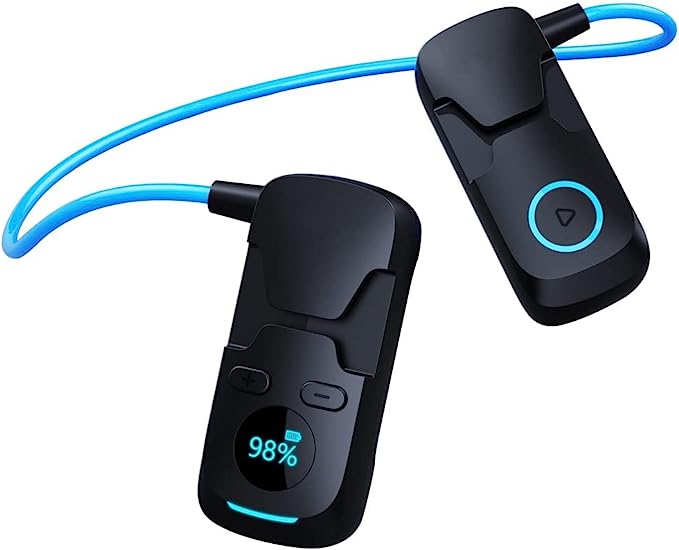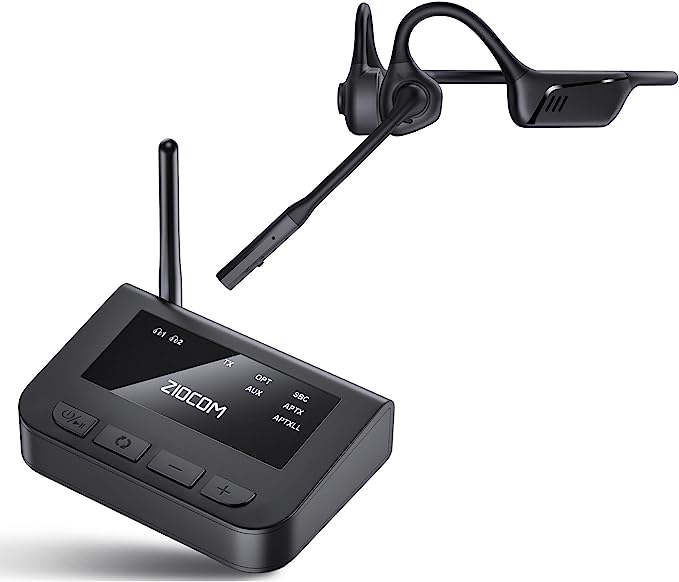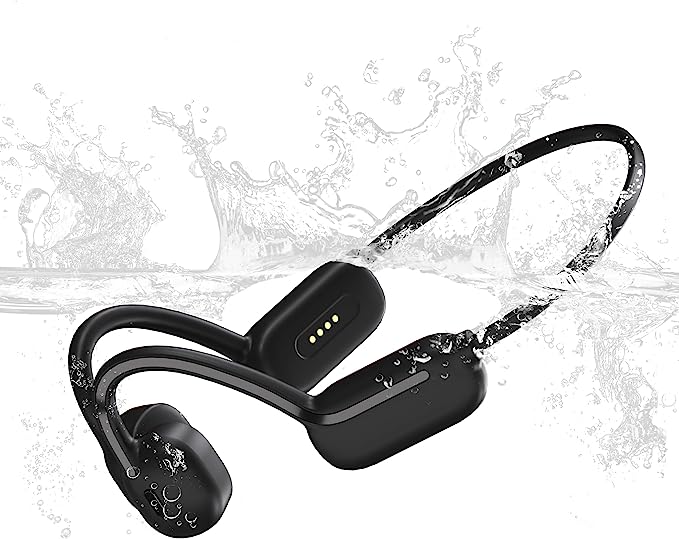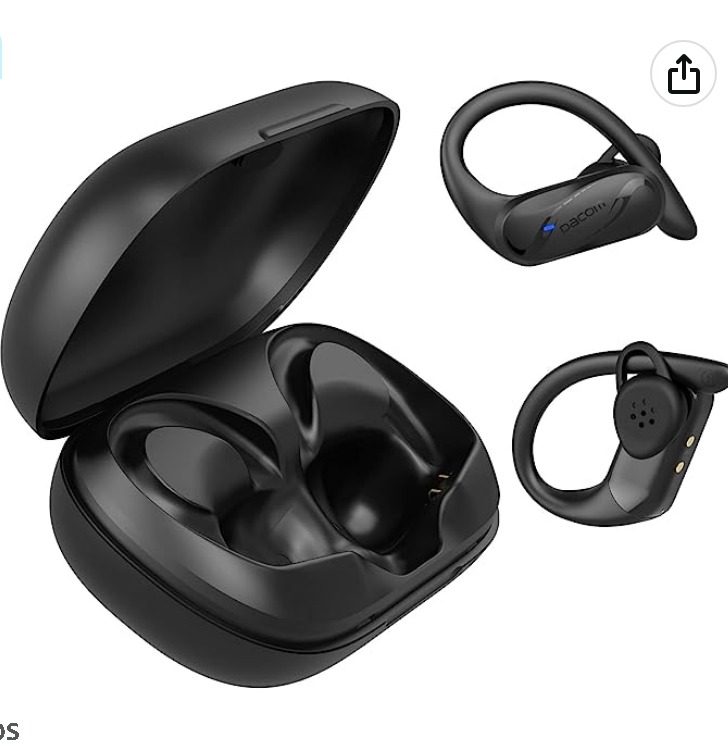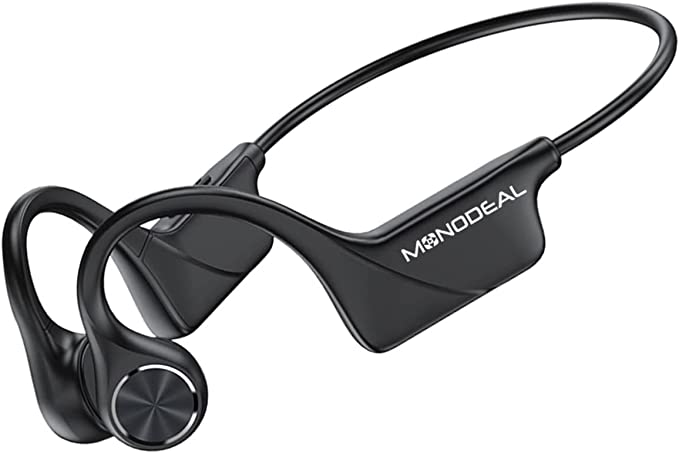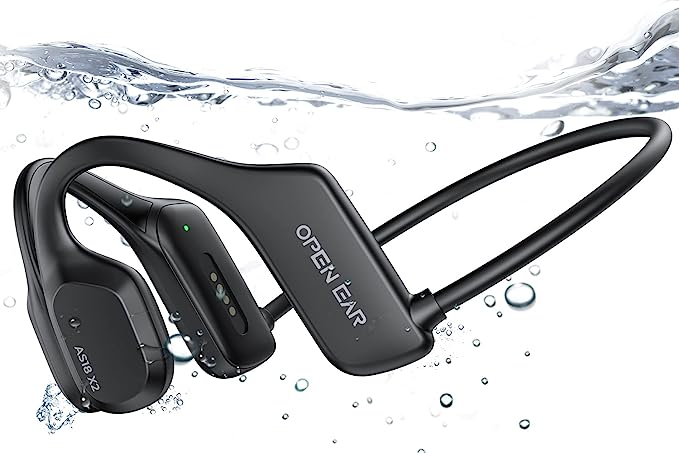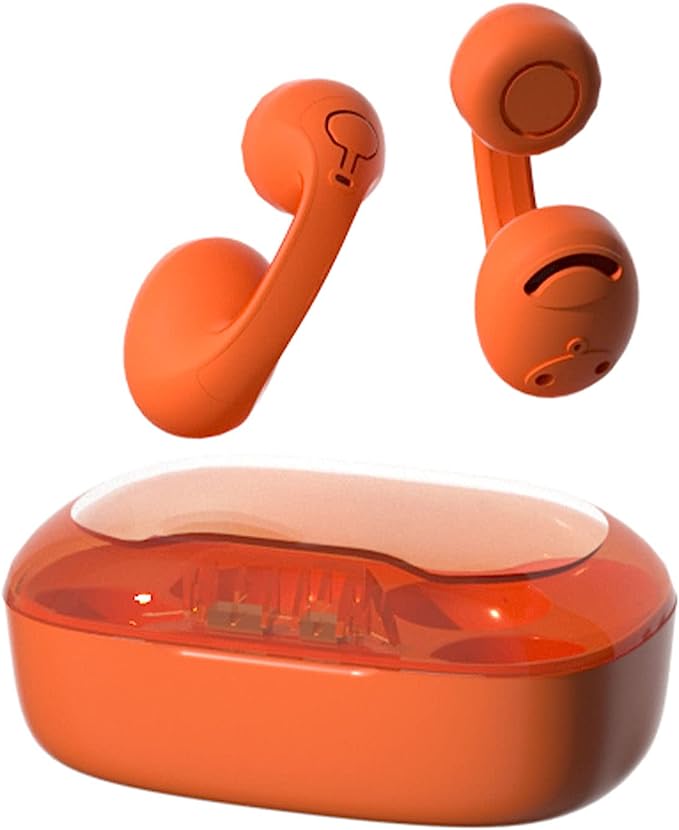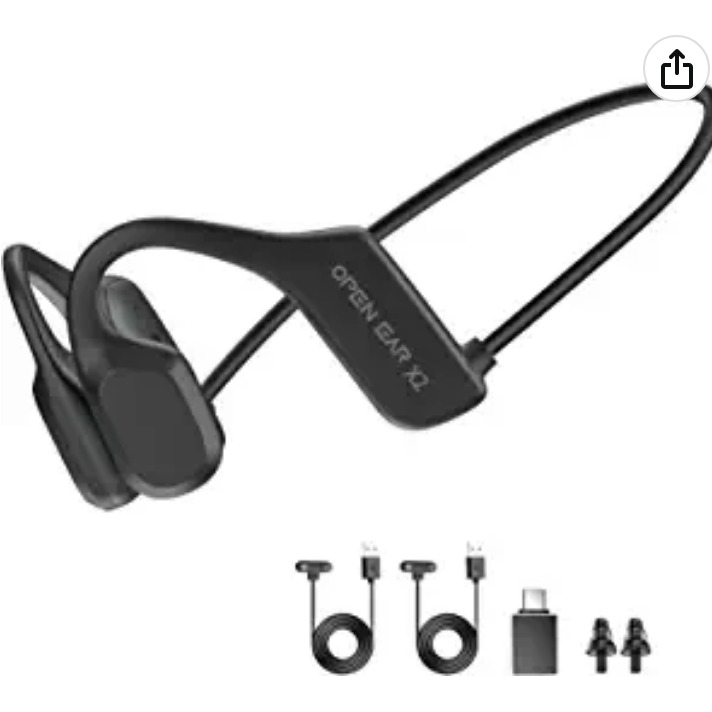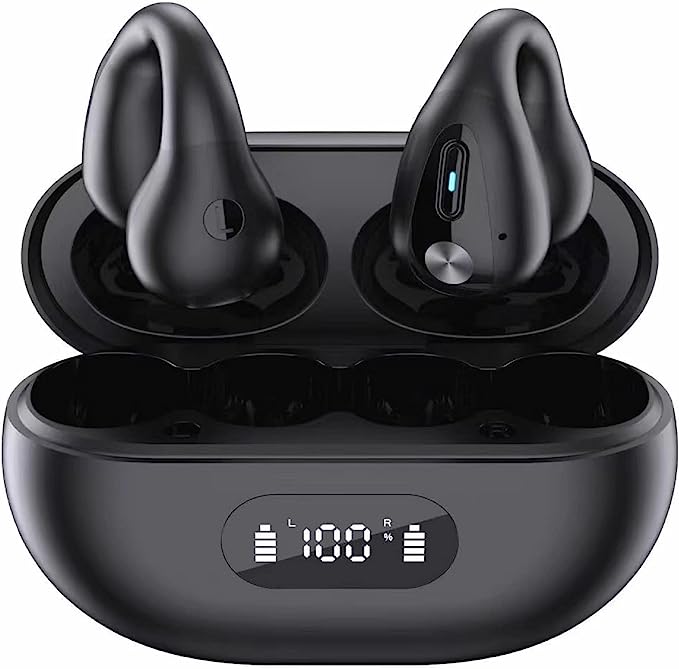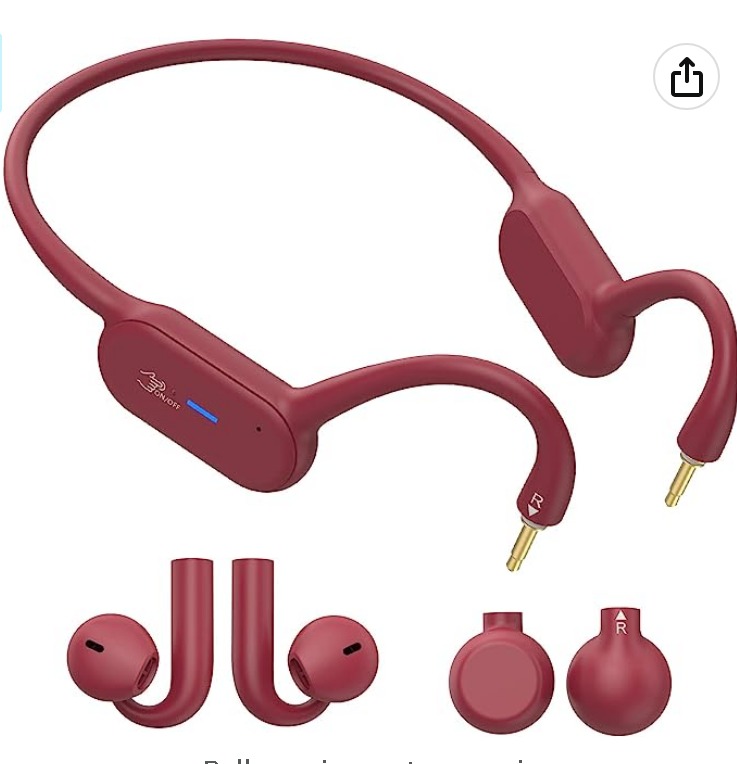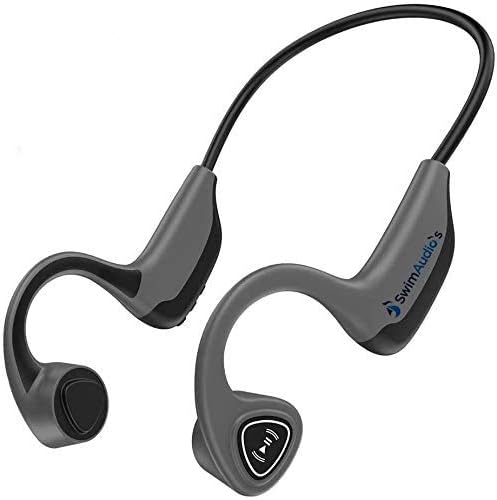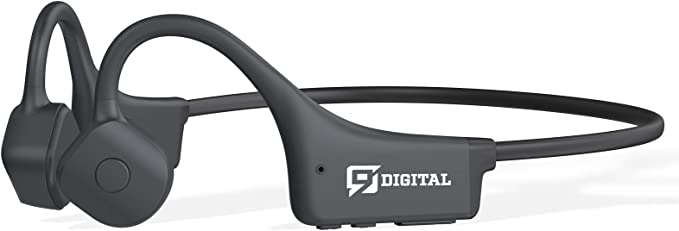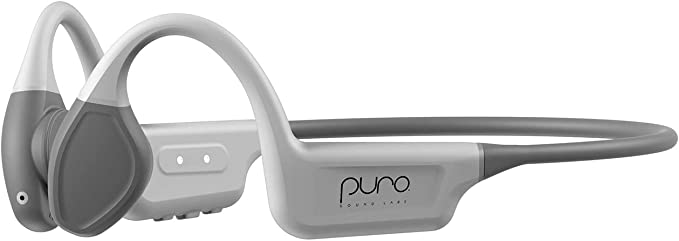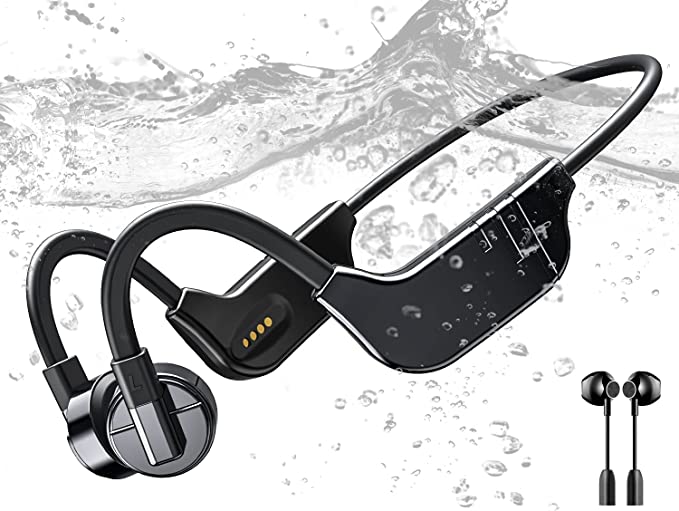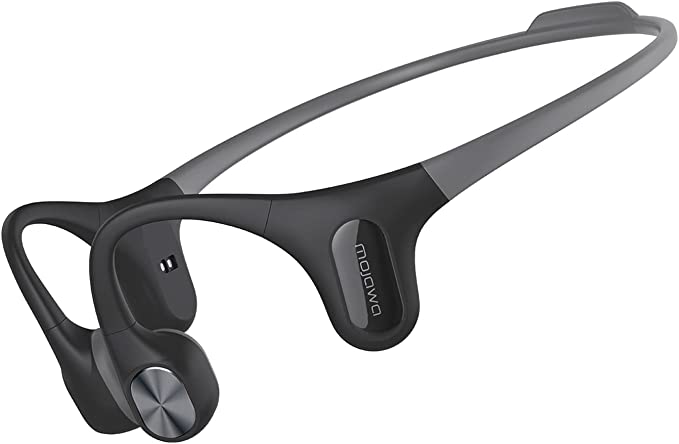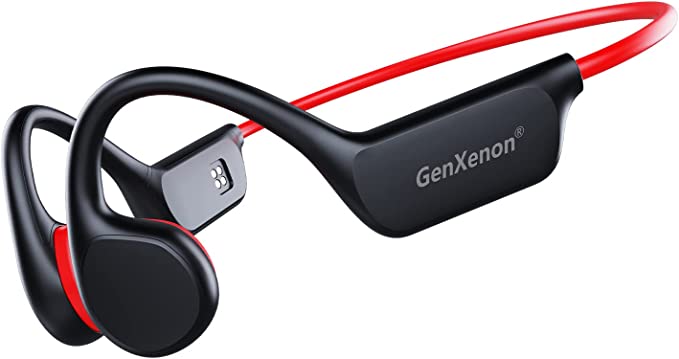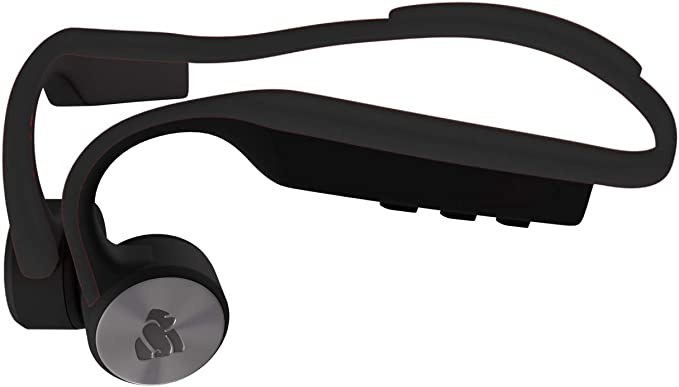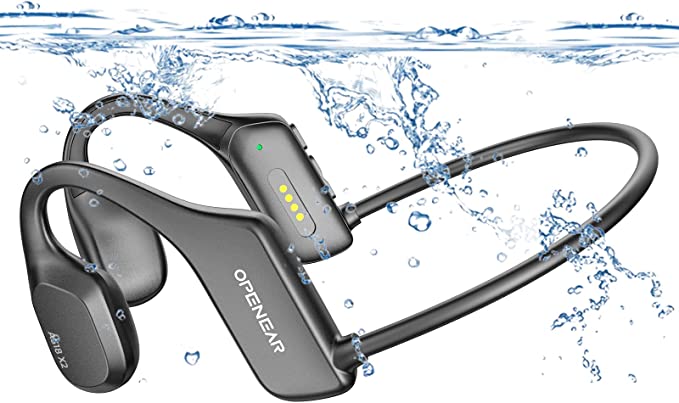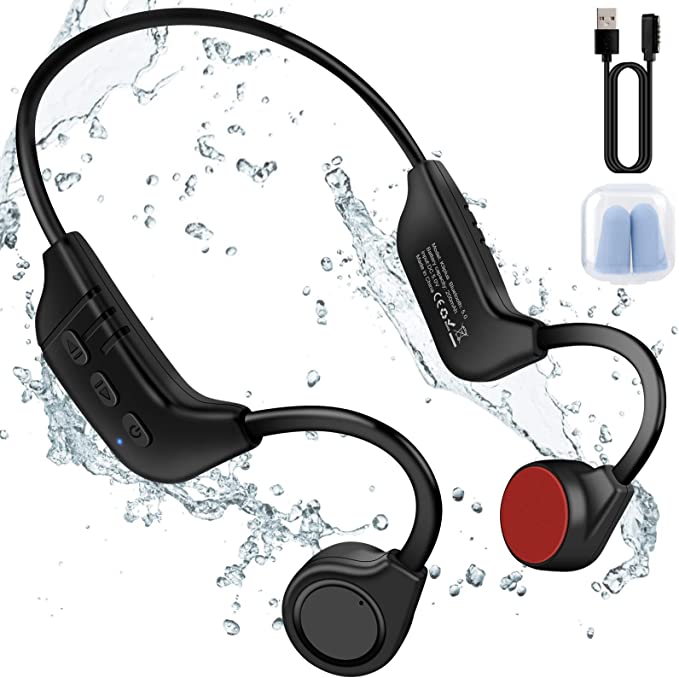AOSMAN AS18BoneX2 Bone Conduction Bluetooth Headphones
Update on June 24, 2025, 8:23 a.m.
We’ve all been there: you’re in the zone, pounding the pavement or powering through laps in the pool, and your audio experience becomes a frustrating distraction. Earbuds slip with sweat, wires tangle, or worse, you’re so immersed in your music that you miss a crucial sound from your environment – a car horn, a fellow cyclist, or a shouted warning. And for swimmers? Finding headphones that can brave the water and deliver consistent audio has long felt like a Herculean task. What if there was a way to enjoy your motivating soundtracks or engaging podcasts without sealing yourself off from the world, and without fearing the elements? This is where intriguing advancements in audio technology, embodied in devices like the AOSMAN AS18BoneX2 Bone Conduction Waterproof Bluetooth Headphones, are rewriting the rules of personal audio, especially for the active soul.

The Unheard Path: Demystifying Bone Conduction Technology
The very idea of hearing sound without anything physically in your ear canal might seem like magic, but it’s rooted in fascinating science and a history that might surprise you. While most sound we perceive travels through the air to our eardrums (air conduction), there’s another, more ancient pathway: bone conduction. Legend has it that composer Ludwig van Beethoven, as his hearing declined, discovered he could still perceive the notes of his piano by biting onto a conducting rod pressed against the instrument, allowing the vibrations to travel through his jawbone to his inner ear.
Modern bone conduction headphones, like the AS18BoneX2, harness this same principle with far more sophistication. As AOSMAN describes, “The earphones are placed outside the ear cavity and transmit sound through vibration.” Tiny, precisely engineered components called transducers rest gently on your cheekbones, just in front of your ears. When audio signals are sent to these transducers, they create minute vibrations. These vibrations then take a detour, bypassing your outer and middle ear (including the eardrum), and travel directly through the bones of your skull to the cochlea – the spiral-shaped, fluid-filled part of your inner ear where sound is actually processed into nerve impulses for your brain to interpret. Think of it as your skull becoming an extension of the headphone, delivering sound in a uniquely direct way.
The most celebrated benefit of this “open-ear” design is situational awareness. Because your ear canals are unobstructed, the headphones “will not cover the sound of the surrounding environment while using it. You can listen to it while listening, and it senses the surrounding sounds while listening to music, making sure you are safer when you use it.” For a runner on busy streets, a cyclist navigating traffic, or even someone walking their dog, this ability to hear an approaching vehicle, a bicycle bell, or another person’s voice can be a critical safety feature. Beyond safety, many users find this open-ear approach incredibly comfortable. With nothing inserted into or pressing against the ear canal, issues like ear fatigue, pressure buildup, or irritation from sweat are significantly minimized. AOSMAN notes that “Even if used for a long time, it can keep the ear comfortable and protect its health of the ear,” a boon for those long training sessions or all-day wear.

Braving the Elements: The Science Behind IP68 Waterproofing and MP3 Freedom
For anyone who’s ever had a pair of headphones succumb to a sudden downpour or an accidental dip, the term “waterproof” is music to their ears. The AS18BoneX2 boasts an “IP68 grade waterproof design,” but what does that alphanumeric code truly signify? “IP” stands for Ingress Protection, an international standard (IEC 60529) that classifies the degrees of protection provided by enclosures of electrical equipment against the intrusion of solid objects (like dust) and liquids.
The first digit, ‘6’, in IP68 means the headphones are completely dust-tight – no ingress of dust is permitted. This is great for trail running or beach workouts. The second digit, ‘8’, is where things get really interesting for aquatic enthusiasts. It signifies that the device is protected against the effects of continuous immersion in water under conditions that are typically more severe than temporary submersion (IPX7). While the exact depth and duration can be specified by the manufacturer, an IPX8 rating generally means the device can handle being submerged for extended periods. AOSMAN confirms these are “suitable for swimming, fitness, running and cycling.”
However, there’s a fascinating quirk of physics when it comes to swimming with wireless audio: Bluetooth signals and water are not good friends. Bluetooth operates in the 2.4 GHz radio frequency band, and these radio waves are significantly absorbed and scattered by water. This means that if your Bluetooth-paired phone is on the poolside, the signal will likely drop the moment your head goes underwater. Recognizing this inherent limitation, AOSMAN provides an elegant solution: “please use MP3 mode when swimming, Bluetooth mode cannot transmit signals underwater.”
This is where the built-in “16G Memory” becomes invaluable. The AS18BoneX2 isn’t just a receiver; it’s a standalone music player. You can “directly store a large amount of music and audiobooks for convenient use anytime, anywhere.” With 16 gigabytes of storage, you’re looking at the capacity for thousands of songs (depending on file quality), creating a personal, motivating soundtrack for your laps without needing any external device nearby. It’s liberation for the aquatic athlete.

Seamless Wireless, Enduring Performance: Bluetooth 5.2 and Thoughtful Design
When you’re not in the pool, the AS18BoneX2 leverages “5.2 Bluetooth new technology.” Each iteration of Bluetooth aims to enhance the user experience, and version 5.2 generally brings improvements in connection stability, range, and efficiency. AOSMAN states that with this technology, “the data link is more robust and stable, and the link distance is longer.” This translates to a more reliable connection to your smartphone, Mac, or PC, meaning fewer dropouts and clearer audio, allowing you to “get more beautiful music and precise call sound.” And with compatibility for both “iOS and Android systems,” pairing with your preferred devices should be straightforward.
The physical design of any sports headphone is just as crucial as its internal technology. The AS18BoneX2 is described as “very light and only 29G.” To put that in perspective, it’s about the weight of five U.S. quarters – remarkably light, which is critical for comfort during extended wear and to prevent them from becoming a distraction during high-impact activities. Furthermore, “the shape is perfect, it can be bent, it will not fall off when you use it.” This suggests a flexible yet secure frame, likely made from a resilient material that conforms to your head shape, ensuring the headphones stay put whether you’re sprinting, jumping, or flipping in the water.
To keep you going, these headphones offer “Up to 8 hours of playback time” on a single charge. That’s enough juice to cover a marathon, a long-distance cycle, several gym workouts, or a full day of mixed use, reducing battery anxiety and keeping your focus on your activity.

The Symphony of Technologies: More Than the Sum of Its Parts
What makes a device like the AOSMAN AS18BoneX2 compelling isn’t just one standout feature, but how these diverse technologies – bone conduction for open-ear awareness, IP68 for all-weather and underwater (MP3) resilience, Bluetooth 5.2 for reliable wireless audio, onboard MP3 storage for device-free listening, and an ultralight, secure design – all work in concert. It’s this synergy that addresses the specific, often complex needs of active individuals. For a triathlete, it means seamless audio from running to cycling, and then, with a quick switch to MP3 mode, into the swim, all with one device. For the everyday fitness enthusiast, it means safer jogs in the park and comfortable, worry-free listening at the gym.
Concluding Notes: Redefining Your Auditory Experience, Safely and Freely
Technology, at its best, should enhance our lives and enable our passions. The evolution of personal audio, particularly for active use, is a testament to this. Devices that leverage bone conduction and robust waterproofing, like the AOSMAN AS18BoneX2, are not just about listening to music; they’re about redefining our relationship with sound and our environment. They offer a pathway to enjoy rich audio experiences while remaining fully present and safe in our surroundings, liberating us from the constraints of traditional headphones and the anxieties of a little (or a lot of) water. It’s about hearing the rhythm of your workout and the rhythm of the world, all at the same time.
